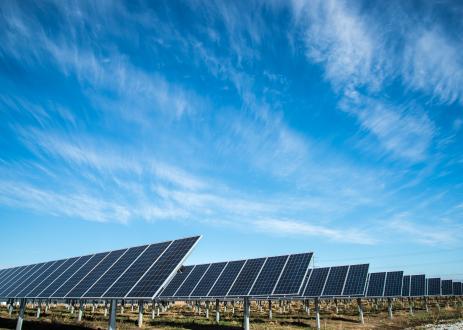Power Sector Opportunities For Reducing Carbon Dioxide Emissions: Missouri

About the Power Sector Opportunties Fact Sheet Series
This series of fact sheets aims to shed light on these opportunities by illustrating the CO₂ emissions-reduction potential from measures in a variety of states. For example, states could build off of existing initiatives like renewable portfolio standards, energy efficiency standards, and other policies as well as use tools like greater efficiency at coal plants, increased use of combined heat and power, and fuller utilization of unused capacity at natural gas plants. We show how emissions savings from these existing policies and infrastructure stack up against the reductions that could be required under forthcoming standards.
概要
奥巴马总统于2013年6月宣布了一项国家气候计划,指示美国环境保护署(EP必威官网是真的吗A)为电力部门设定碳污染标准。EPA建立这些标准后,各州将执行自己的计划来实现这些减少。
在此情况说明书中,WRI研究了密苏里州现有工具可以用来减少发电厂排放并帮助满足未来的标准。
Executive Summary
现有政策和基础设施的二氧化碳减少
Missouri can meet about 70 percent of EPA’s emission rate target for the state between 2020 and 2030 with the following measures:
满足能源效率目标。Missouri’s Energy Efficiency Investment Act calls for the state’s investor-owned utilities to capture all cost-effective energy efficiency opportunities, and establishes a voluntary target of nearly 10 percent cumulative savings of electricity sales by 2020. Meeting this goal can help the state lower its emission rate.
Meeting renewable energy targets.密苏里州的可再生能源标准(RES)要求其投资者拥有的公用事业公司出售的15%的电力能够到2021年可再生资源。
使用更多的气体。Missouri’s most efficient natural gas plants—combined cycle (NGCC) units—generated much less electricity than they were capable of producing in 2012. Fully utilizing existing combined cycle natural gas capacity can help the state meet its emission target.
Increasing existing coal plant efficiency by 2.5 percent.Existing coal plants could save energy by upgrading their equipment and making other operational improvements.
Using more combined heat and power (CHP).密苏里州可以在大学,医院和制造设施等网站上建造更多的CHP系统(使用废热来发电更有效地发电。
CO2 Reduction Opportunities from Expanded Clean Energy Policies
密苏里州可以通过:
Increasing its energy efficiency goal to 2 percent of sales from 2015 onward
Requiring all utilities, not just investor-owned utilities, to meet the current RES (15 percent by 2021) and continuing to increase renewable generation to 20 percent of total generation by 2030
Projects
-

美国气候必威官网是真的吗
访问项目Advancing climate action on federal, state and local levels to ensure a sustainable, prosperous and just future for all Americans.
Part of 必威官网是真的吗
